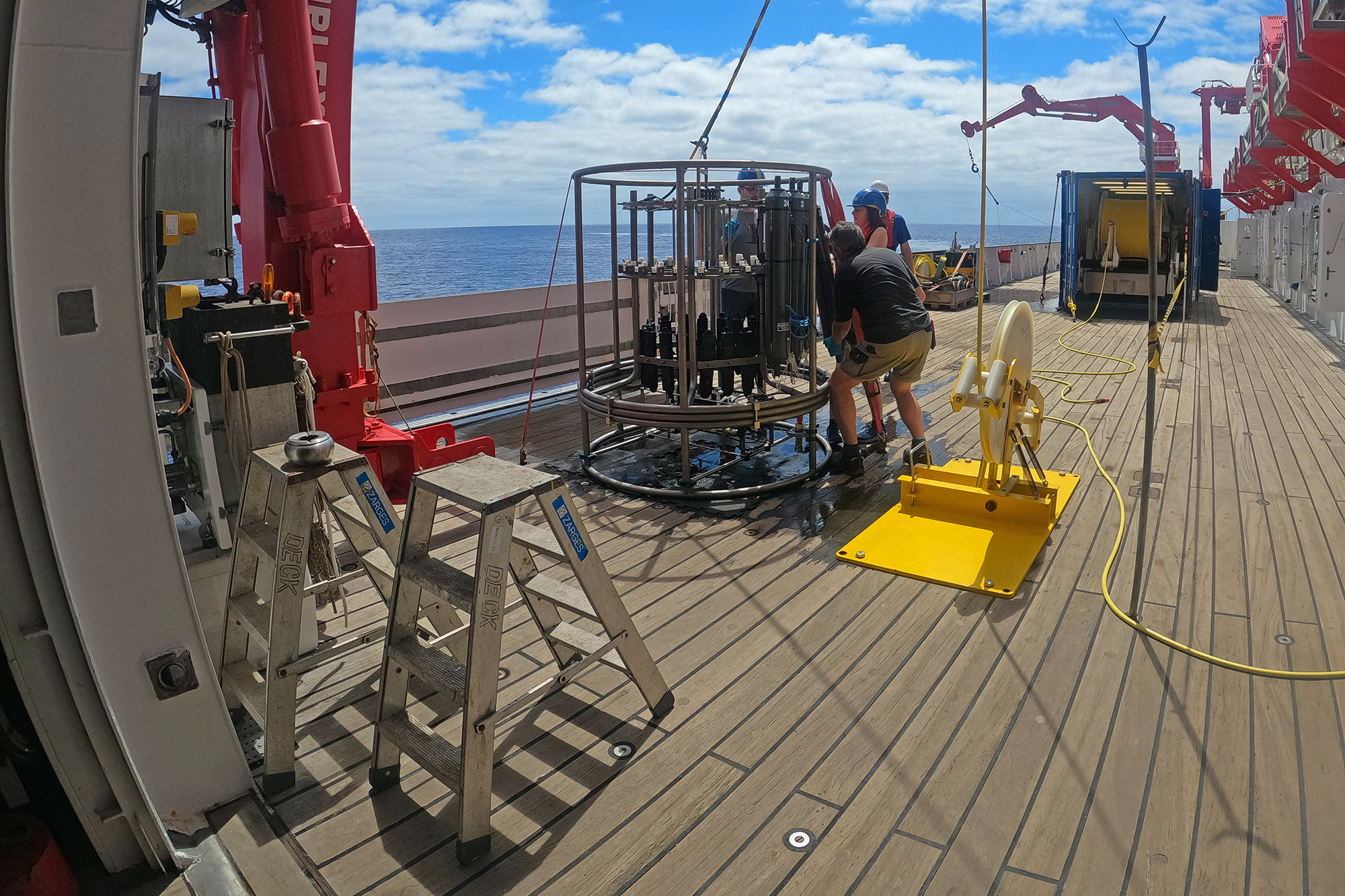Hey there,
This is the second GEOTRACES cruise I have attended. Back in Kiel I am taking part in the bachelor’s program Biochemistry and molecular biology. I have been working as a research assistant in Eric Achterberg’s lab at GEOMAR for the last two years, and I am very happy to join them on the cruises. It is not only a great experience but I also get two months to learn more about marine sciences. We are holding science meetings on board that give us brief introductions of the different research topics, and the scientists are always happy to answer questions about the methods they are using and their scientific backgrounds.
As part of my work on board, I am helping to sample for helium isotopes. The helium isotope 3He is one of the tracers for hydrothermal vent inputs to the deep ocean, and this isotope is more or less the only source that releases this particular helium isotope into deep sea waters. The South Pacific Ocean is not very well studied, so we hope to get more information about the impact of hydrothermal vents on marine geochemistry and especially their vent plume movement.
The vents also release different trace metals into their surrounding waters, for example iron. Iron is particularly important because it can limit primary production and nitrogen fixation by algae in the nutrient-depleted open ocean. Therefore, I am also taking filter samples to analyze particulate and dissolved siderophores. Siderophores are organic ligands produced by bacteria that show specificity for iron and are assumed to play a major role in keeping seawater iron in solution.
And now it is only one and a half weeks until we reach New Caledonia! We are busy doing our last stations but also enjoy waves, sunsets and good potatoes. I really hope we see some whales, as we are getting closer to the coast!
Many greetings from the South Pacific,
Lea Blum
GEOMAR and University of Kiel
